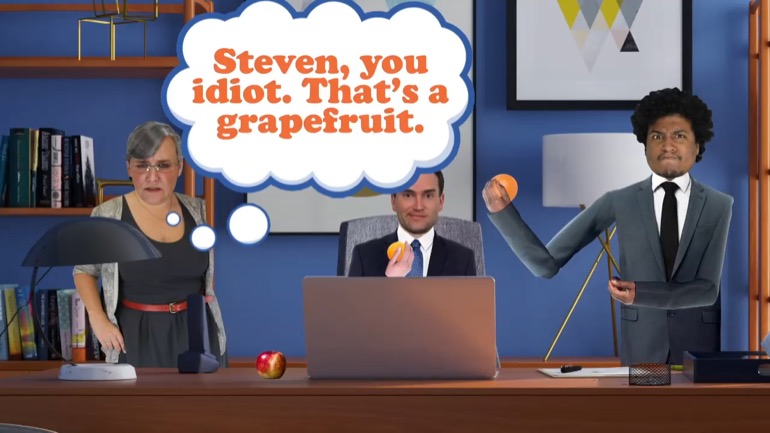ShmoopTube
Where Monty Python meets your 10th grade teacher.
Search Thousands of Shmoop Videos
Muni Bonds Videos 71 videos
What's a dividend? At will, the board of directors can pay a dividend on common stock. Usually, that payout is some percentage less than 100 of ear...
Maturity is, quite simply, the date when a debt becomes due. As for our maturity, well... we're still giggling about the word "due."
What are Freddie Mac and Fannie Mae? They sound like snack cakes to us, so, uh...maybe we should watch this video.
Finance: What is Coupon Stripping? 3 Views
Share It!
Description:
What is Coupon Stripping? Coupon stripping is the process of taking a coupon bearing bond and separating the coupons into individual zero coupon securities of serial maturity to be sold in the market presumably for additional profit above the yield of the coupon annually on its own until maturity. This is akin to someone owning a large space and subdividing it into smaller rental units for a cumulative income greater than what a large rental space would yield.
- Social Studies / Finance
- Finance / Financial Responsibility
- College and Career / Personal Finance
- Life Skills / Personal Finance
- Life Skills / Finance Definitions
- Finance / Personal Finance
- Courses / Finance Concepts
- Subjects / Finance and Economics
- Finance and Economics / Terms and Concepts
- Terms and Concepts / Accounting
- Terms and Concepts / Banking
- Terms and Concepts / Bonds
- Terms and Concepts / Company Valuation
- Terms and Concepts / Credit
- Terms and Concepts / Entrepreneur
- Terms and Concepts / Forex
- Terms and Concepts / Index Funds
- Terms and Concepts / International
- Terms and Concepts / Investing
- Terms and Concepts / Muni Bonds
- Terms and Concepts / Tax
- Finance / Finance Definitions
Transcript
- 00:00
finance a la shmoop what is coupon stripping? burlesque bonds that's the [Burlesque bond dancer on stage]
- 00:08
ticket or maybe not okay okay when a coupon is
- 00:12
stripped it is removed from the principle of a bond so in this sense
- 00:18
think of a bond as having two components there's the interest that it pays in the
- 00:23
form of a semi-annual coupon and then there's well the principle when the
Full Transcript
- 00:28
coupon is stripped off of the bond it is sold separately to investors who are [Bond sold to investor]
- 00:34
simply buying a stream of cash flows into the future of interest payments
- 00:38
only they're not worried about collecting the principal so in practice
- 00:42
investors will simply do a discounted cash flow model of an interest payment
- 00:46
of I'll say six grand a year for 20 years which would be a total set of
- 00:51
interest payments of $120,000 for which investors will obviously pay less than
- 00:56
that amount today to discount back for the time value of money and the risk
- 01:01
that the issuer of that bond goes belly-up and one day decides it can no
- 01:05
longer pay its coupons so maybe that number is half of the hundred twenty [120k halved]
- 01:10
grand or two-thirds or three-fourths or something like that but it's some
- 01:14
meaningful discount to the eventual total payout of 120 thousand dollars and
- 01:18
the calculation of the math when it looks something like this to be all Wall
- 01:22
Streety and all the way you would calculate the value here would be to
- 01:26
make twenty columns each representing one year forward of coupon payments and [Columns appear for cash flow calculation]
- 01:31
then discounting back by one plus the risk-free rate ie what the Fed pays for
- 01:36
an analogous time period plus some premium added in for risk alright for
- 01:41
example if one year fed paper pays two percent to discount back the coupons for
- 01:46
next year well you might add a hundred basis points to the risk-free rate to
- 01:51
then divide that $6,000 payment by 1.03 to the first power
- 01:55
cause this bond issuer is not risk free all right skipping forward five years
- 02:00
well you might note that federal paper at that point is paying four percent for
- 02:04
its five-year term and because it's further into the future well you might [Power of 5 highlighted in calculation]
- 02:08
need to discount 250 basis points added on to that risk-free rate to account for
- 02:13
much higher degree of risk that while the company issuing those bonds goes
- 02:16
bye-bye so in this case you would discount those five year out bonds by
- 02:20
that six thousand dollar payment then divide by one plus the risk-free rate of
- 02:25
4% then you'd add in the risk premium you've added on top that's two and a
- 02:29
half percent to come up with a total base of six and a half percent making
- 02:33
the calculation 1.065 to the fifth power in the denominator which
- 02:37
then makes the present risk adjusted value of six grand paid five years from [Calculation answer appears]
- 02:42
now to equal about forty five hundred ninety bucks so if you keep doing this
- 02:47
math for twenty years that's about how long it will take to do this problem you
- 02:51
will come up with a fairly sophisticated answer as to how much those stripped
- 02:55
coupon payments are worth cumulatively over the next twenty years so then what
- 03:01
happened to the principal off of which those coupons were you know stripped
- 03:05
well the principal amount is actually much easier to calculate if it was a [Man discussing principal amounts of stripped coupons]
- 03:08
hundred grand while that was yielding six percent for twenty years well then
- 03:13
that hundred thousand dollars of principal will need to be paid back
- 03:15
after 20 years once so calculating the present value of that 20 years from now
- 03:20
hundred grand payment is way easier than calculating the myriad coupon payments
- 03:25
we just did along the way in fact it's just this one calculation and we might [Man pressing calculator buttons]
- 03:29
note that federal paper coming due in 20 years is yielding four and a quarter
- 03:33
percent and we're gonna add quite a lot of risk for a bond 20 years forward
- 03:39
because well, bad things happen to good companies all the time and we remember
- 03:42
that about two decades ago Yahoo was the most highly valued company on the planet [Yahoo logo appears]
- 03:47
and Amazon was worth a fraction of what Sears was worth so yeah bad things so
- 03:53
we're gonna add three and a half percent or three hundred fifty basis points of
- 03:57
risk premium each year to that four and a quarter percent risk-free rate to come
- 04:01
up with a total discount rate of 7 and 3/4 percent okay almost done hang with
- 04:06
me so now we're gonna calculate what that hundred grand is worth today when
- 04:10
it's paid out 20 years from now by dividing it by the quantity one plus [New calculation appears]
- 04:15
0.0775 to the 20th power and all that math then says that the hundred
- 04:19
grand 20 years from now is only worth about 22 grand and change so why would a
- 04:23
company strip off coupon payments and principal
- 04:26
in the first place answer simply put because investors were willing to buy
- 04:31
that bifurcated stripped security well some investors want small payments all [Investor being paid small payments]
- 04:36
the time and they don't care about a final large lump sum payment other
- 04:39
investors think lovers of zero coupon style bonds don't need any cash today [Man in bed with coupon]
- 04:44
and instead are having taking one lump payment with a relatively high return
- 04:48
delivered away at the very end of a couple of decades of interest loving
- 04:52
compoundage-- like you could buy one of those hundred grand thingies 20 years
- 04:56
from now for only 22 grand today so yeah that's coupon stripping and as far as [Man discussing coupon stripping]
- 05:00
real stripping goes well this is about as g-rated as it gets people here what [Woman with coupon for head pole-dancing]
- 05:05
do you think we're running here at shmoop..
Related Videos
GED Social Studies 1.1 Civics and Government
What is bankruptcy? Deadbeats who can't pay their bills declare bankruptcy. Either they borrowed too much money, or the business fell apart. They t...
What's a dividend? At will, the board of directors can pay a dividend on common stock. Usually, that payout is some percentage less than 100 of ear...
How are risk and reward related? Take more risk, expect more reward. A lottery ticket might be worth a billion dollars, but if the odds are one in...










































































